
The Geometry Generator E88 is designed especially for aircraft definition. A Series of different generators from this series support several aircraft speeds and configuration types.
 For a detailed description take a look at my paper from the AIAA 99 conference in Reno.
For a detailed description take a look at my paper from the AIAA 99 conference in Reno.
Alternative Geometry DefinitionThe geometry definition is different from conventional CAD systems. First some 2 dimensional key curves are specified. The curves are compositions of different basic curves like arcs, quintics, splines etc. The keys specify characteristic lines such as the crownlines or planform of an airplane. |
|
||
| Special functions calculate the 3 dimensional model from the 2 dimensional curves. The functions are specialized to the different configuration types such as low speed, transonic or supersonic transport. Special algorithms can be used for smooth connections between wings and bodies. | 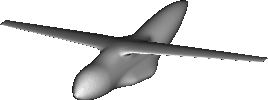 |
||
| We destinguish between wing-type and body-type parts. Proven airfoil
sections from catalogs or which have already been tested, can be used for
wing definition. The body cross sections are for example given by superelliptical
functions, box type shapes or refined cross sections derived by special flow modelling calculations.
More components can be added successively to build more complex configurations. |
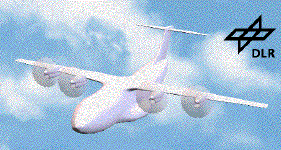 |
||
Geometry VariationsThe generators allow the definition of two different geometries. Shapes can then be calculated as blending of both extreme configurations. Series of configurations varying between the extremes allow the simulation of oscillating or adaptive geometries. These are ideal input for an automatic optimization cycle. |
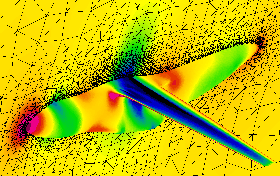 |
||
Working with GeometriesThe point data can be used for numerical calculations and CAD - postprocessing. For CFD, the DLR-tau code can be used for Euler and Navier Stokes calculations on unstructured grids. Using exactly the same point data for building a windtunnel model with a CAD system, allows comparison of theoretical and experimental results. |
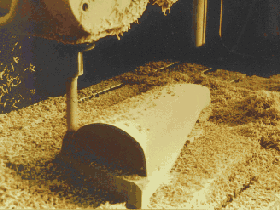 |
||
|
The current version uses the plot3d format for data exchange.
An IGES interface is part of planned further options.
For the configuration DLR-F9 we want to examine adaptive components in the shoulder area of the airplane. Take a closer look at the DLR-F9 Configuration wireframe model. (JAVA applet) |
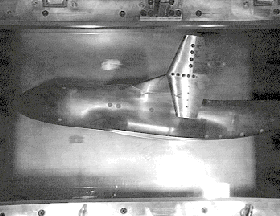 |
Geometry goes MoviesSee some results based on the configurations generated with the Geometry Generator:
|
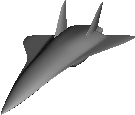 |